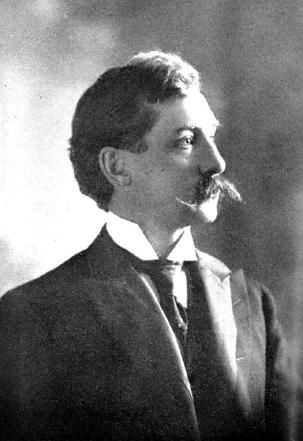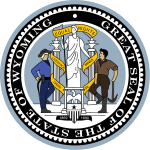
John Eugene Osborne was an American physician, farmer, banker, and politician who served as the 3rd governor of Wyoming and United States representative as a member of the Democratic Party.

Fenimore Chatterton was an American businessman, politician, and lawyer. He was the sixth Governor of Wyoming from April 28, 1903 until January 2, 1905.

Bryant Butler Brooks was an American businessman, rancher, politician, oilman, banker and published author. He was the seventh governor of Wyoming from January 2, 1905, until January 2, 1911.

The 2010 United States Senate election in Utah took place on November 2, 2010, along with other midterm elections throughout the United States. Incumbent Republican U.S. Senator Bob Bennett was seeking re-election to a fourth term, but lost renomination at the Republican Party's state convention. Mike Lee proceeded to win the Republican primary against Tim Bridgewater and the general election against Democrat Sam Granato. As of 2025, this is the most recent U.S. Senate election in which a political party held the seat after denying renomination to the incumbent senator.

The 1974 United States Senate election in Utah took place on November 5, 1974 alongside other elections to the United States Senate in other states as well as elections to the United States House of Representatives and various state and local elections.

The 1910 Wyoming gubernatorial election was held on November 8, 1910. Incumbent Republican Governor Bryant B. Brooks declined to seek re-election. The leading Republican candidates to succeed him were initially former U.S. Senator Joseph M. Carey and Attorney General William E. Mullen. However, shortly before the Republican convention, Carey announced he would instead run as an independent candidate. Shortly thereafter, Mullen was formally nominated by the Republican Party. A week later, at the Democratic convention, Carey was named as the Democratic nominee for Governor. In the general election matchup between Carey and Mullen, Carey won a sizable victory, winning every county in the state, a feat that no other Democratic nominee would accomplish until Dave Freudenthal in 2006.

The 1892 Wyoming gubernatorial special election was held on November 6, 1892. Republican Governor Francis E. Warren, who was elected in 1890, resigned several weeks into his term after being elected to the U.S. Senate by the state legislature, elevating Secretary of State Amos W. Barber to the governorship and triggering a special election for the balance of Warren's term.

The 1894 Wyoming gubernatorial election was held on November 6, 1894. Democratic Governor John E. Osborne, first elected in the 1892 special election, declined to seek re-election to a second term, instead aiming to be elected to the U.S. Senate. In part because of a backlash against the Democratic Party owing to the Panic of 1893, Republicans won the governorship back from the Democrats, and would hold onto it until 1914.

The 1898 Wyoming gubernatorial election was held on November 8, 1898. Incumbent Republican Governor William A. Richards was a candidate for re-election, but he was defeated for renomination at the Republican convention, which instead nominated DeForest Richards. The Democratic Party joined forces with the Free Silver Republicans to jointly nominate former State Representative Horace C. Alger for Governor. The Populist Party, though reduced in influence from earlier elections, nominated E. B. Viall as its candidate. Though the election was closer than 1894, owing in large part to a dramatic reduction in the share of vote received by the Populist nominee, Roberts defeated Alger by a wide margin.

The 1902 Wyoming gubernatorial election was held on November 4, 1902. Incumbent Republican Governor DeForest Richards ran for re-election. He was once again nominated by the Republican Party, and faced Cody Mayor George T. Beck, the Democratic nominee, and Socialist Party nominee Henry Breitenstein in the general election. Richards won re-election in a landslide, becoming the first Governor of Wyoming to win re-election. However, Richards did not end up serving a full second term; on April 28, 1903, he died in office, elevating Secretary of State Fenimore Chatterton to the Governorship and triggering a special election in 1904.

The 1906 Wyoming gubernatorial election was held on November 6, 1906. Incumbent Republican Governor Bryant B. Brooks ran for re-election to a second term. After winning renomination against some intraparty challengers, he faced State Senator Stephen Keister in the general election. Brooks was ultimately able to win re-election by an overwhelming margin, setting a record for the largest majority in a state gubernatorial election, which would not be exceeded until Governor Stanley Hathaway's re-election in 1970.

The 1912 Utah gubernatorial election was held on November 5, 1912. Incumbent Republican William Spry defeated Democratic nominee John Franklin Tolton with 38.17% of the vote against his 32.36% in a four way race, with Progressive nominee Nephi L. Morris winning 21.16% of the vote, and Socialist nominee Homer P. Burt winning 7.89% of the vote.

The 1895 Utah gubernatorial election was held on November 3, 1895. It was the first gubernatorial election in the state of Utah and it was held before it became a state on the 4th of January, 1896, to set up the machinery for the new state. Republican Heber Manning Wells defeated Democratic nominee John Thomas Caine with 50.32% of the vote. Wells' first term was to run for five years, until the next general election in 1900. Also, Populist Henry W. Lawrence ran but only won 4.95% of the vote.

The 1892 Idaho gubernatorial election was held on November 8, 1892.

A general election was held in the U.S. state of Wyoming on Tuesday, November 6, 1894. All of the state's executive officers—the Governor, Secretary of State, Auditor, Treasurer, and Superintendent of Public Instruction—were up for election. The Republican Party, helped by the strong performance of the Populist Party, which operated as a spoiler to the Democratic Party, won back the governorship and improved its margin of victory in all other statewide offices.

A general election was held in the U.S. state of Wyoming on Tuesday, November 8, 1898. All of the state's executive officers—the Governor, Secretary of State, Auditor, Treasurer, and Superintendent of Public Instruction—were up for election. The Republican Party retained all of the offices up for election, though by reduced margins from 1894 as the Populist Party's performance decreased considerably.

A general election was held in the U.S. state of Wyoming on Tuesday, November 4, 1902. All of the state's executive officers—the Governor, Secretary of State, Auditor, Treasurer, and Superintendent of Public Instruction—were up for election. Republicans held onto all statewide offices by landslide margins.

A general election was held in the U.S. state of Wyoming on Tuesday, November 8, 1904. Two special elections were held: one for Governor and one for State Treasurer. In the gubernatorial election, acting Governor Fenimore Chatterton ran for re-election but was defeated for renomination at the Republican convention by Bryant B. Brooks, who won the subsequent special election over Democrat John E. Osborne. In the special election for State Treasurer, Republican William C. Irvine, who was appointed to the office by Governor Chatterton, successfully won re-election.

A general election was held in the U.S. state of Wyoming on Tuesday, November 6, 1906. All of the state's executive officers—the Governor, Secretary of State, Auditor, Treasurer, and Superintendent of Public Instruction—were up for election. Republicans held onto all statewide offices by landslide margins.

















